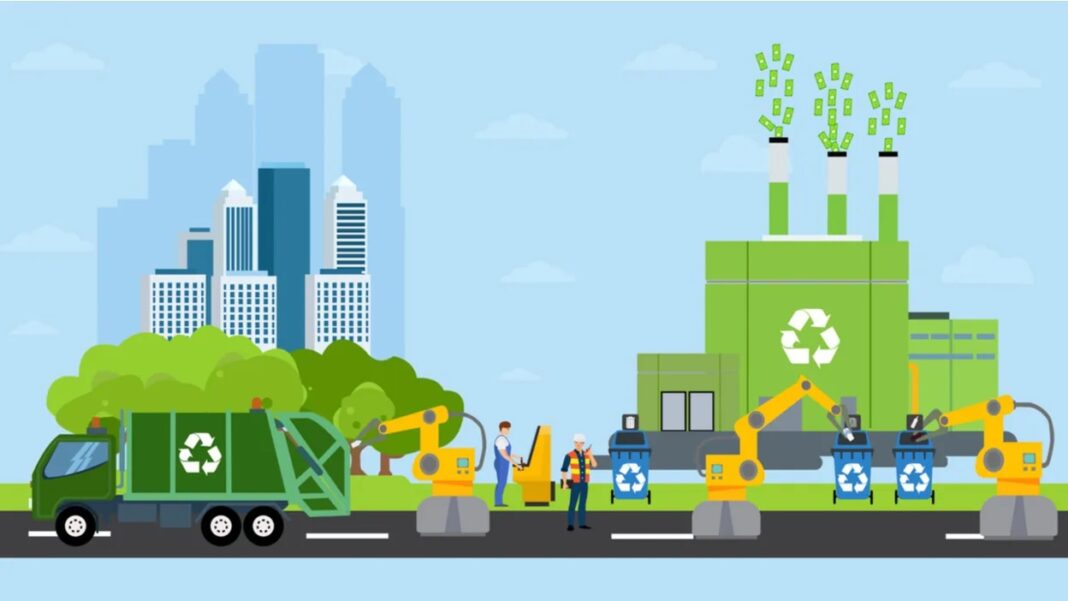Commercial renovations are exciting ventures that promise upgraded spaces, improved functionality, and a refreshed image for clients and staff. But behind the scenes of every polished transformation is a challenge that often gets underestimated—managing the mountain of waste produced during the process.
From drywall dust to outdated furniture, renovation debris can accumulate faster than expected, threatening to slow progress and create unsafe conditions. Without a well-planned approach to waste management, even the most organized renovation schedule can fall behind.
The Unique Waste Profile of Commercial Renovations
Unlike residential projects, commercial renovations often involve a broader mix of materials. Offices may generate piles of carpet, cubicle partitions, and electronics. Retail stores could be clearing out shelving, display units, and packaging waste. Restaurants might be disposing of kitchen equipment alongside construction debris.
This diversity means that waste planning needs to be both flexible and thorough. A one-size-fits-all disposal solution rarely works for these projects. Instead, the best approach involves multiple strategies—each tailored to the type and volume of material at hand.
Matching Disposal Solutions to Project Phases
Commercial renovations typically happen in stages, and each stage produces different waste streams.
- Demolition phase – This is when the largest and heaviest debris appears. Broken concrete, removed drywall, and structural materials pile up quickly. Larger dumpster rental containers and dedicated rolloff service are essential at this stage to handle high volumes efficiently.
- Build-out phase – Waste shifts toward smaller scraps, packaging from new materials, and leftover supplies. Mid-sized containers or scheduled pickups for commercial trash removal keep the workspace clear without taking up too much room.
- Finalization phase – The end of a project brings a mix of leftover materials, minor debris, and general cleaning waste. Residential trash removal may not be suitable here—timely removal using the right container size ensures the space is move-in ready.
Planning for these phases from the outset helps keep containers appropriately matched to the job, avoiding wasted capacity or overflow issues.
The Role of Placement and Accessibility
In commercial spaces, container placement is more than a matter of convenience—it directly affects productivity. If workers have to carry debris long distances, it slows progress and increases labor costs.
Ideally, rolloff service containers should be positioned close to active work zones but not block entrances, exits, or emergency access. In multi-level buildings, this may mean scheduling smaller containers on upper floors and transferring waste to a larger dumpster at street level.
Coordinating with Renovation Schedules
One of the simplest ways to keep waste under control is to sync disposal schedules with renovation timelines. This avoids situations where a full container sits for days waiting for pickup or, worse, a worksite comes to a standstill because there’s no available disposal option.
Some providers offer flexible scheduling that adapts to the unpredictable nature of renovation work. That adaptability can mean the difference between meeting a deadline and falling behind.
Avoiding Hidden Costs
While waste management is an inevitable part of commercial renovations, unexpected costs don’t have to be. A few preventative measures can keep budgets intact:
- Prevent contamination – Mixing restricted materials (like paint cans or certain electronics) with general debris can result in extra fees.
- Avoid overloading – Containers filled beyond their limit may require additional trips or repacking.
- Choose the right size – Renting a container too small means frequent pickups; too large, and you may pay for unused capacity.
Integrating Sustainability into Renovations
Renovations present a perfect opportunity to incorporate sustainable waste practices. Sorting materials for recycling or reuse reduces landfill volume and can even offset disposal costs.
Metal, clean wood, and concrete are among the most recyclable renovation materials. Cardboard packaging from new installations can also be easily diverted from general trash. A well-organized construction debris removal plan can turn what might otherwise be waste into valuable resources.
Maintaining a Safe Work Environment
Debris isn’t just unsightly—it’s a safety hazard. Cluttered walkways increase the risk of trips and falls, while piles of materials can hide sharp objects or unstable surfaces. Keeping waste contained through regular removal not only keeps the project moving but also reduces liability.
For businesses that remain partially open during renovations, visible safety measures are even more important. Customers and employees should be protected from dust, noise, and hazards related to waste storage.
The Business Case for Efficient Waste Management
When waste is managed well, the benefits extend beyond the construction site. Projects finish faster, spaces are cleaner, and the handover to clients or tenants is smoother. This efficiency also supports a company’s professional image—nothing undermines the excitement of a renovation like an unfinished space cluttered with leftover debris.
Providers such as Hiep Sanitation support commercial clients in achieving these goals by delivering timely, reliable, and adaptable waste solutions that align with project demands. This partnership allows renovation teams to focus on the build itself while ensuring that waste never becomes a bottleneck.
Post-Renovation Cleanup
The final stage of a commercial renovation is often overlooked in waste planning. But that last sweep—removing protective coverings, sweeping floors, and hauling away residual debris—sets the tone for the completed space.
Even after the main dumpster rental period ends, arranging a final rolloff service pickup or targeted commercial trash removal ensures the space is ready for immediate use. For businesses transitioning directly into operations, this seamless cleanup is invaluable.
Key Takeaways for Successful Waste Control
- Plan waste strategy alongside the renovation schedule so that disposal is never an afterthought.
- Match container size and type to each phase of the project for maximum efficiency.
- Prioritize safety and accessibility in container placement to protect workers and maintain productivity.
- Incorporate recycling and reuse practices wherever possible to reduce environmental impact and costs.
- Partner with a reliable waste provider to keep the process smooth from start to finish.
Conclusion
Commercial renovations demand a level of waste management that goes beyond routine disposal. Every decision—from container size to pickup timing—can influence the pace, cost, and success of the project.
By integrating dumpster rental, rolloff service, commercial trash removal, residential trash removal, and construction debris removal into the planning process, businesses can control waste without losing focus on their core goals.
The right approach keeps work areas safe, schedules on track, and finished spaces ready to impress—because in commercial renovations, a clean and organized site is the final step toward delivering results that truly stand out.









